


Home Energy Water Work Economy Solution Politics Team Product Recycling Cars Ships Aircrafts Promotion
World Pollution Air Weather Violence Women Weapons Psychology Plants Animals Food Peace Faith Imprint
Ships
Good cruise ships already exist
There are alternatives, the Royal Clipper is already sailing, you can book a trip on this platform: https://www.starclippers.com/eu, the Sea Cloude (second picture) is a little smaller and can be booked on: https:// www.seacloud.com/de can be booked.
A journey that might inspire you more than just a boring trip on an overloaded pleasure boat. Travel should be an experience. If you feel at home on a trip, you can stay at home right away, it's cheaper. A healthy world can be as exciting as a new life, leading you to a new way of life, intense and powerful like nature.
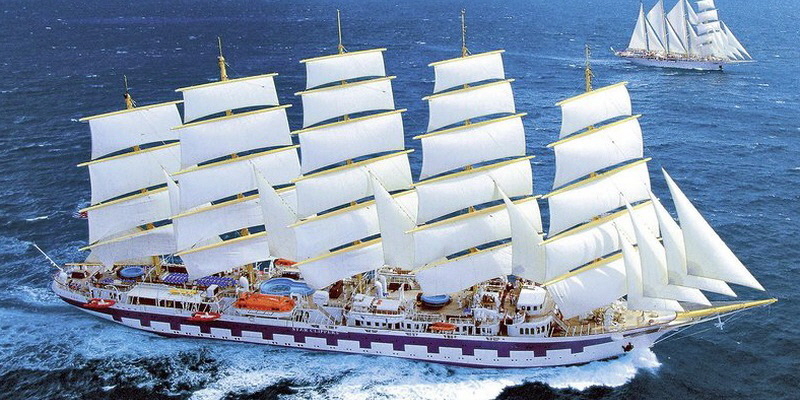

There would also be goods ships
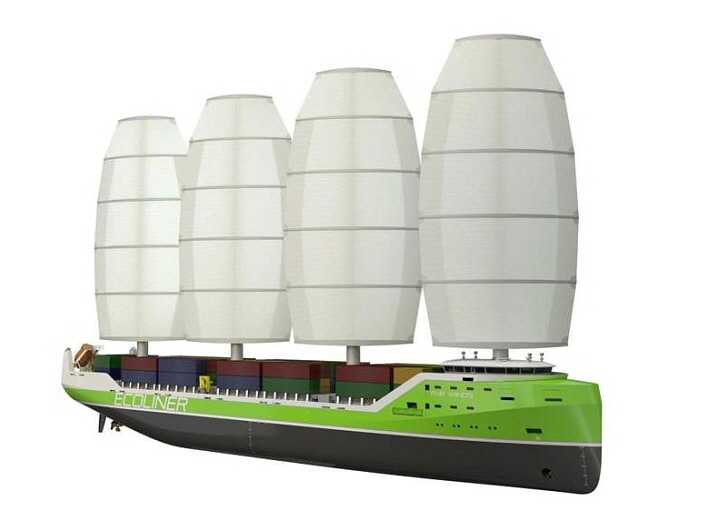
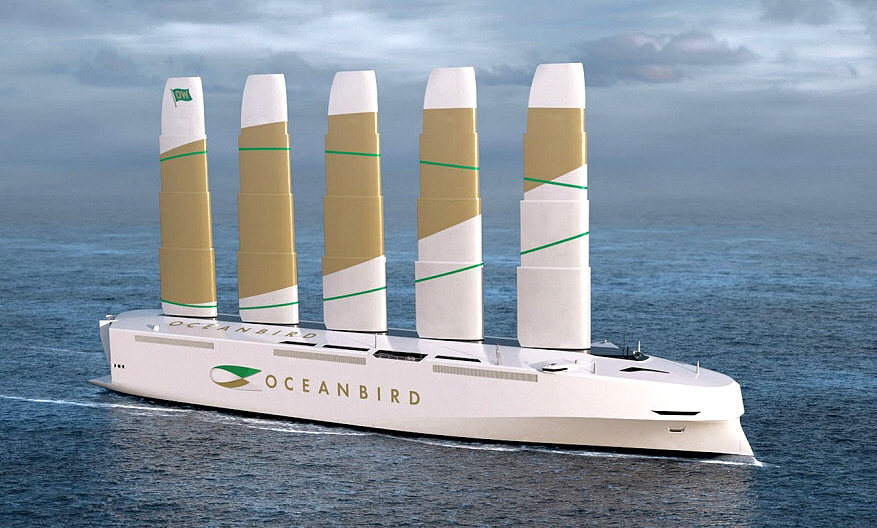
Unfortunately, the Ecoliner should not to be built. It was supposed to be used to transport VW vehicles, but at the last moment VW decided not to have the ship built. The Swedish technology and shipping company Wallenius Marine is working on a promising concept with the Oceanbird. The technology used here is actually thousands of years old. The Oceanbird is intended to be a highly efficient and modern sailing ship. According to the management, Wallenius Marine decided around 2010 to look for a way towards zero-emission shipping.
There is still a long way to go before there is a significant improvement.
More than 90,000 ships of various sizes sail the seven seas. The fleet consists of different ship types: cargo ships (container ships, oil, gas and chemical tankers, bulkers), passenger ships (ferries and cruise ships) and service ships (e.g. tugboats, offshore supply ships). Fishing vessels are not included in these statistics. Ships today mainly run on heavy fuel oil (HFO), which is obtained from the residues of the refineries and is of inferior quality compared to marine diesel, which has only have to be used in certain protected areas.
A medium-sized 12,000 TEU (twenty-foot equivalent unit) ship consumes 300 tons of heavy fuel oil per day when fully loaded. By 2025, international shipping should emit at least 30 percent less CO2, that would be in two years. So far not even 5% has been achieved. The tanks hold around 11,500 tons of heavy oil, so that a full tank costs around 5.3 million euros at the current oil price, plus 400 tons of diesel oil for operation in designated environmental protection areas such as the North Sea.
The record for consumption is held by the large container ships and tankers.
Such a colossus is powered by a 12-cylinder diesel engine with an output of around 100,000 hp. At full load, it swallows around 2.6 liters of heavy fuel oil per container per 100 km. These include giants that ship cars between Asia, Europe and North America. They alone consume up to 400 tons of heavy fuel oil - per day..

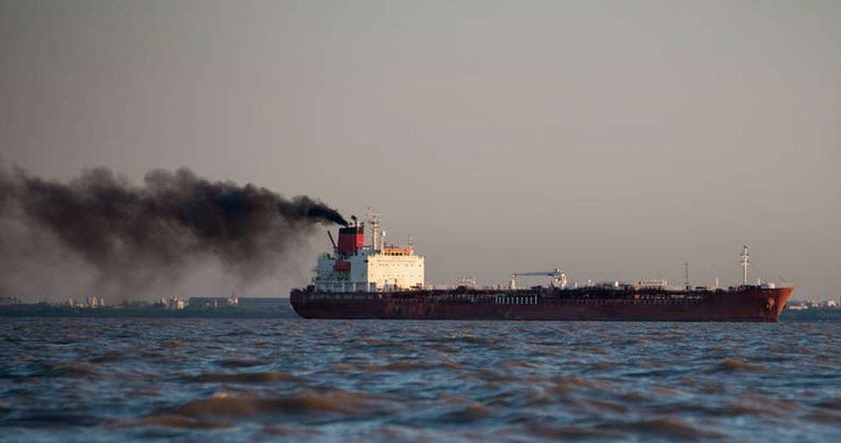
This results in why it is so absurd to transport LNG or hydrogen by ship! Because the “green” effect in turn becomes a “greenhouse” effect!
There are also just over 300 cruise ships worldwide for overseas cruises. Most sail for European and American shipping companies.
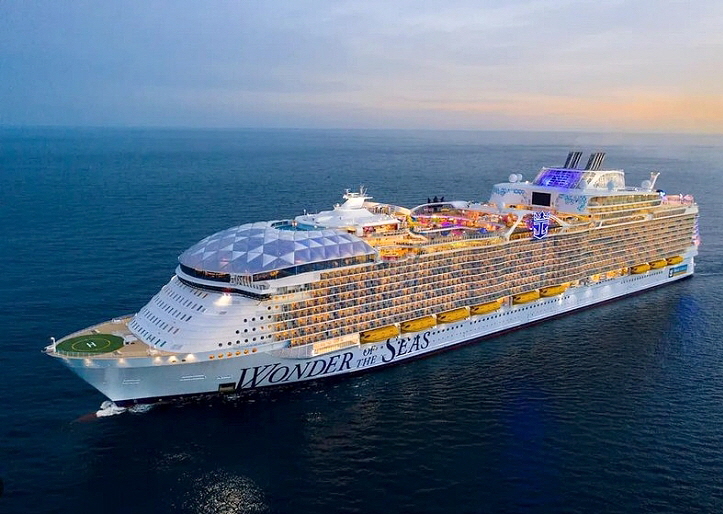
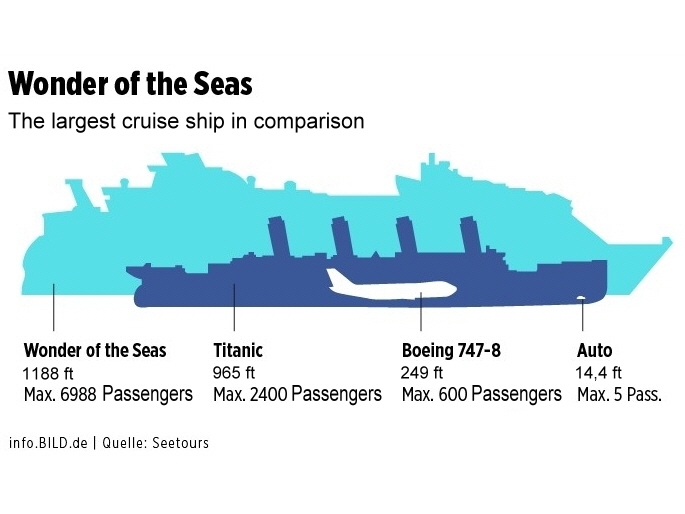
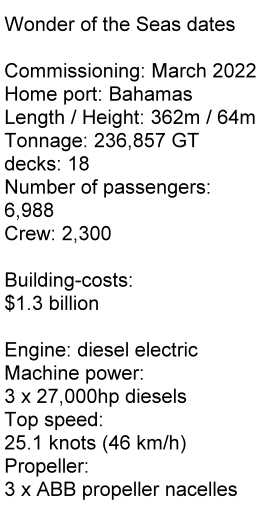
The enormous masses of the Wonder of the Seas are moved with around 66,000 gallons (approx. 250,000 liters) of diesel - per day.This corresponds to the energy consumption of a small town.
The cruise ships are currently in focus but not our main problem. The main problem is and remains the shipping of goods. So how do we deal with the problem?
LNG is losing its climate-friendly image
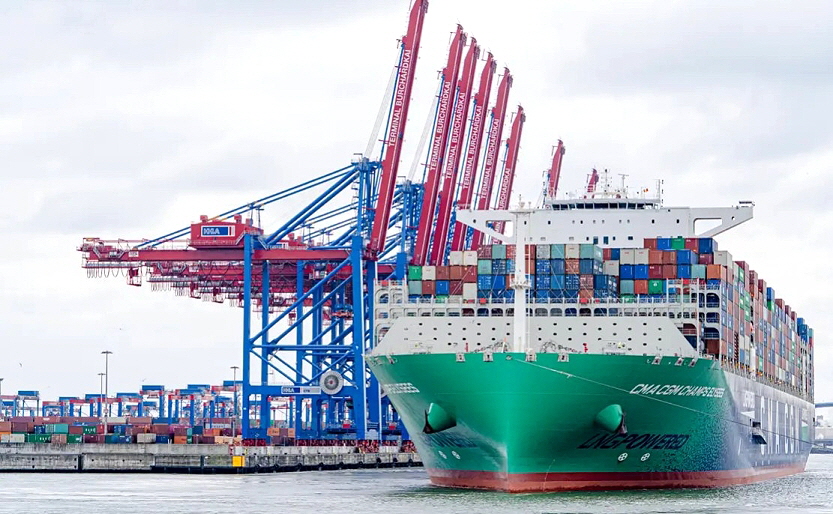
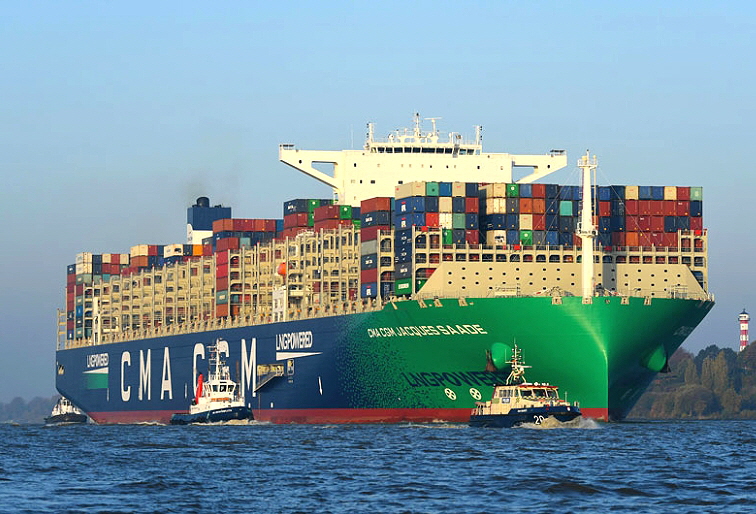
Here we see the two LNG powered giants: Champ Elysees and Jacques-Saade. Until now, LNG (Liquefied Natural Gas) was considered the more climate-friendly alternative to heavy oil and diesel. Although its methane also releases carbon dioxide, the emissions are up to 20 percent lower for the same performance. Nevertheless, liquid natural gas has now lost its good reputation again. There are more and more studies that even warn against its use. The climate balance of methane is comparable to that of heavy oil, according to the German Nature Conservation Union (Nabu).
This is because methane is a much stronger greenhouse gas than carbon dioxide. Part of the gas escapes even when methane is extracted, especially when fracking is carried out. Likewise from the minus 162 degrees Celsius cold tanks. A total of around 4 percent methane was released into the air without being burned. This is a huge problem, because if more than 40 percent of ships were converted to liquid gas by 2050, that would block our way into the future. Ships sail for up to fifty years, but until then we'll need zero percent ships only.
LNG terminal in Brunsbüttel (Germany) convertible to hydrogen
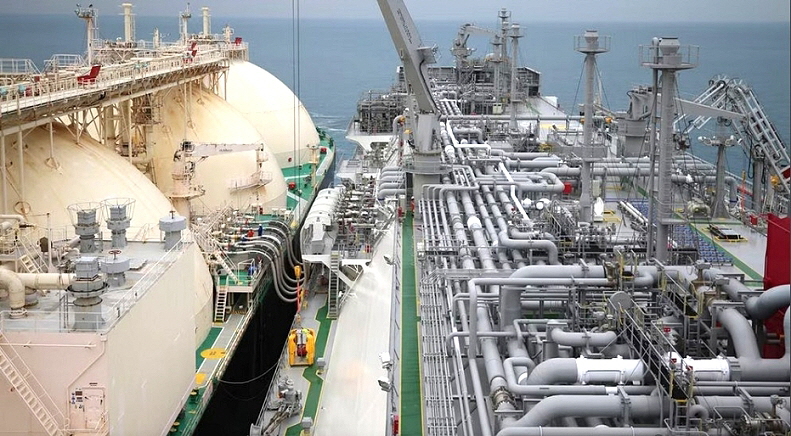
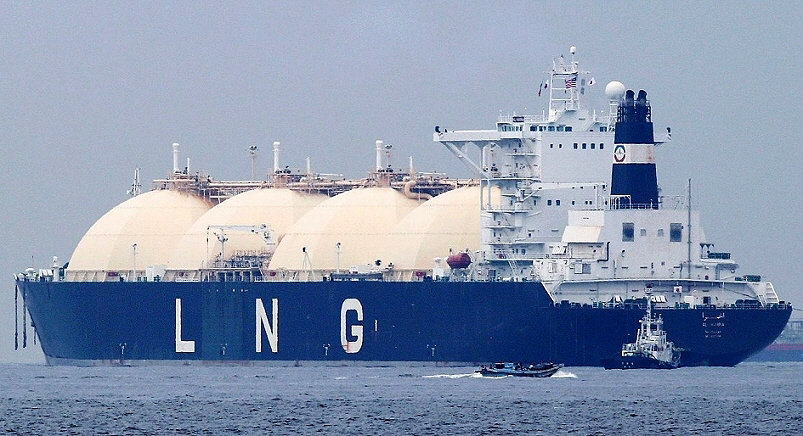
First LNG and later on Hydrogen. Is that the green energy?
LNG
In order to replace the annual 167 billion cubic meters of Russian gas, around 1,800 shiploads are needed for Europe - five a day. According to the Institute for Shipping Economics and Logistics, this would require 160 new tankers. Tankers that would mostly run on heavy fuel oil. They consume 300 to 400 tons of heavy oil - per day and are between 6 and 36 days, if we only calculate with the average of 21 days that makes 36750 tons of heavy oil per day that are burned and the ships also want to drive back. So that's about 56,000 tons of heavy oil per day and around 14 million tons of heavy oil a year just to supply Germany with LNG. Doesn't really sound green.
World's first hydrogen transport ship the Suiso Frontier
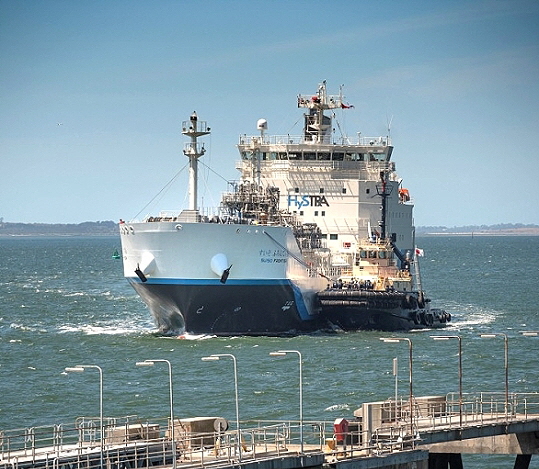


Approximate consumption: 75,000 liters of diesel per day, travel time Example: it takes just under 6 days to cover a distance of 1,000 nautical miles at an average speed of 7 knots. At full speed about 4 days.
The contractual distance for hydrogen deliveries between Australia and Germany is not really close at 16,000 kilometers. But the distance is not the biggest problem. The consumption of diesel would be about: 5 million liters! The hydrogen has to be constantly cooled to minus 253 °C, which consumes additional energy.
Qatar would be better: 6161 km - distance from Hamburg to Doha by sea, consumption approx.: 1.8 million liters of diesel. Both consumptions are always only for the one-way trip. All ships have to drive back. This calculation is for example only.
Because this ship was developed and built by Hystra for the production of hydrogen from Australian brown coal, its liquefaction and the subsequent sea transport with a suitable tanker to the Japanese terminal in Kobe. Significant amounts of CO2 are produced during the production of hydrogen from lignite. So, in the end, nothing about this endeavor is green, not even remotely. So why is it done then? There is currently virtually no market for lignite, making it a potentially attractive, cheaper alternative to domestic hydrogen production for Japan, despite the extreme cost of shipping over 9,000 kilometers by sea. Actually, you could also burn old car tires. This is not how we achieve climate goals!
The hydrogen powered ferry MF Hydra
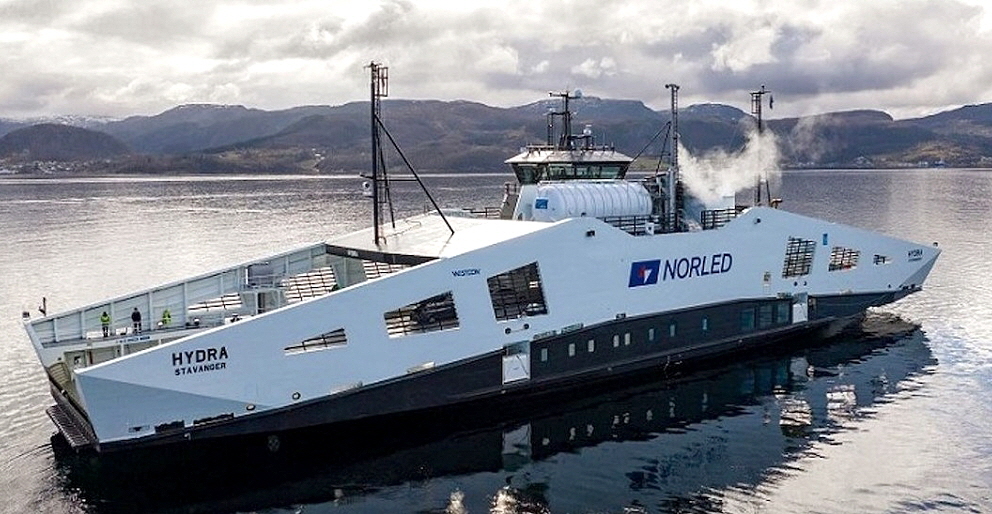
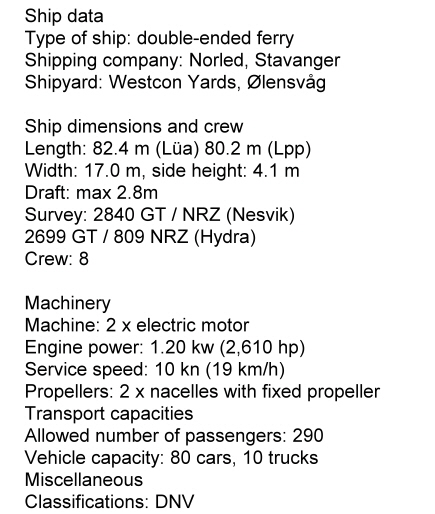
The car and passenger ferry MF Hydra has started regular commercial operations after a four-month test and optimization phase. It is the first ship in the world to run on liquid hydrogen. The hydrogen is converted into electrical energy via fuel cells, which is used to drive two electric motors. The shipping company and the shipyard were able to optimize both the storage and the handling of hydrogen. This resulted in a very nice study for environmentally friendly drives in ships. However, the well-known problems remain: the power is too low for larger ships, the tanks would have to be extremely large for longer distances, which would make cooling the hydrogen very difficult. So far, hydrogen propulsion will probably only be a solution for small to medium-sized ships. For this reason, ammonia is becoming increasingly interesting as a marine fuel. Ammonia consists of 75 percent hydrogen, but is much easier to transport. Although the gas is toxic, it could make a valuable contribution to low-emission shipping - provided leaks and the release of nitrous oxide produced during combustion are avoided.
Hoping for Ammonia, the Viking Energy Vessel

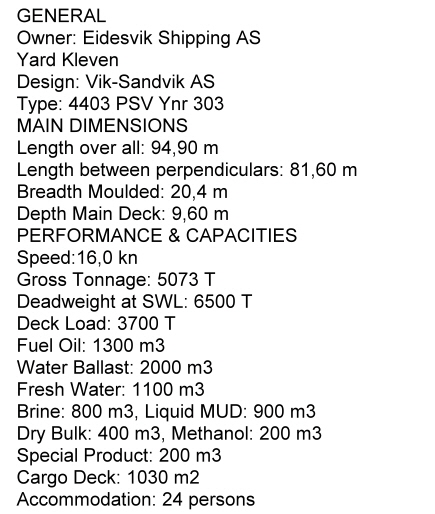
The supply ship Viking Energy of the Norwegian shipping company Eidesvik is to be equipped with a high-temperature fuel cell for ammonia operation by 2023. Burning ammonia directly leads to emissions of nitrogen oxides (NOx), nitrous oxide (N2O) and direct slip of ammonia (NH3). For lower emissions, the ammonia would have to be completely converted down before combustion. The nitrogen would then go into the atmosphere before the hydrogen would be used. With pure H2, than, one could be operate a low-temperature fuel cell (PEM), as is also used in the MF Hydra. They have a high power density, can be used flexibly and have a very long service life if they are operated with pure hydrogen. Then there would be no more nitrogen oxides at all. A third possibility, as used in the supply ship Viking , are high-temperature fuel cells (SOFC). They also have a very high electrical efficiency, but could be operated with pure ammonia without the risk of nitrous oxide or NOX being produced. Ammonia would also be a cheaper way to store hydrogen over longer periods and transport it over longer distances. Ammonia can be transported by ship better and more cheaply than hydrogen itself. However, handling ammonia and alsdo hydrogen is also extremely dangerous, and corresponding extreme accidents are unfortunately likely.
Other alternatives: Flettner rotor and auxiliary sail
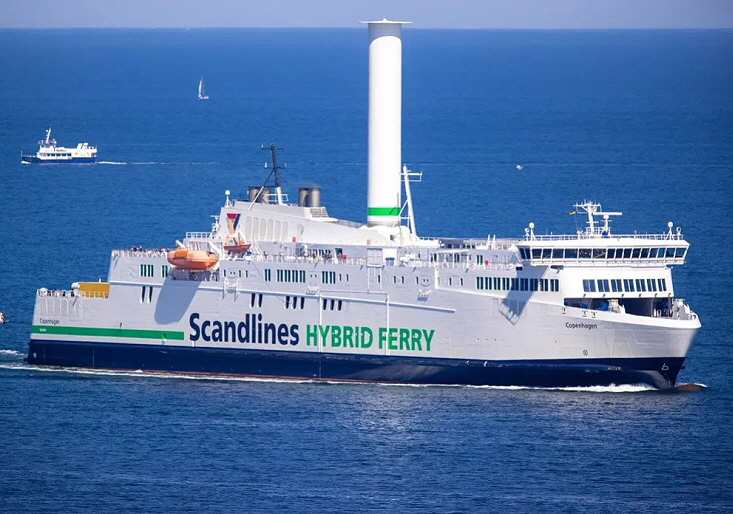
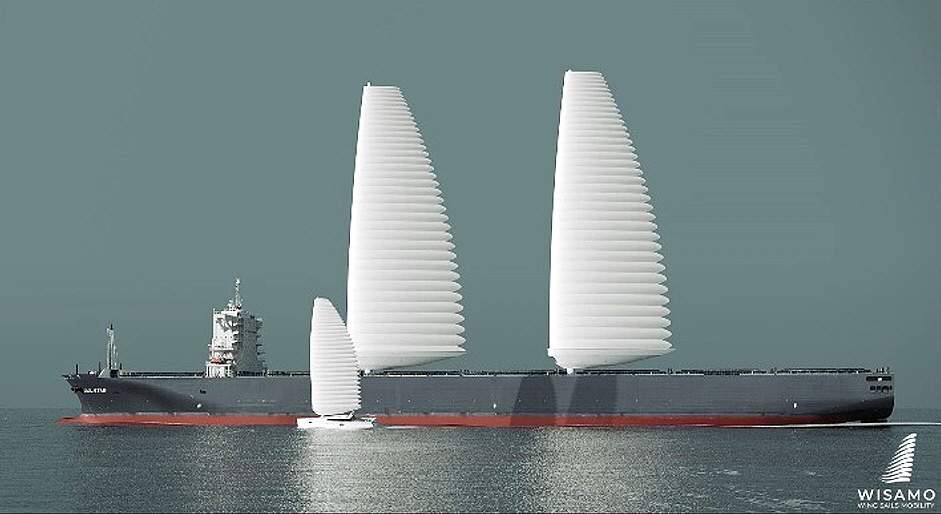
The Copenhagen is a fast ferry with a lot of power: Engine power: 15,800 kW (21,482 hp), top speed 21 knots (39 km/h), so you want to save. The Flettner rotor ensures savings of up to 20%. The Flettner rotor is a rotating cylinder exposed to the wind flow. It acts like a sail and uses the Magnus effect to generate a force perpendicular to the flow. It is named after Anton Flettner, who patented it as a ship propulsion system. The Flettner rotor is already being used on various ships because it is a cost-effective application that can also be retrofitted.
The WISAMO project: inflatable sails for greener shipping. Together with two Swiss inventors, Michelin developed the so-called WISAMO (Wing Sail Mobility) project. The automated system uses the wind to improve a ship's fuel efficiency by up to 20%. The system can be used on merchant ships as well as on sports boats and is therefore versatile. With its retractable telescopic mast, ships of all kinds can easily enter ports or pass bridges. In collaboration with Michel Desjoyaux, a world-renowned skipper, Michelin can test and perfect the sailing system under real conditions. The benefit of wind propulsion is that wind energy is clean, free, universal and totally uncontroversial. It offers a promising solution to improve the environmental footprint of merchant ships. The WISAMO system will be used on a merchant ship for the first time in 2022. Michelin expects it to go into production once testing is complete. A good solution to at least come close to the originally planned savings of 30% in emissions. I just wonder why sailing ships aren't immetiatelly built to replace the old poison slingshots, when it's clear that we have to go this route anyway. That´s strictly according to the motto: "Why easy when it can be complicated"?
Back to the future, sailing ships are undefeated, they are the true champions of the seven seas
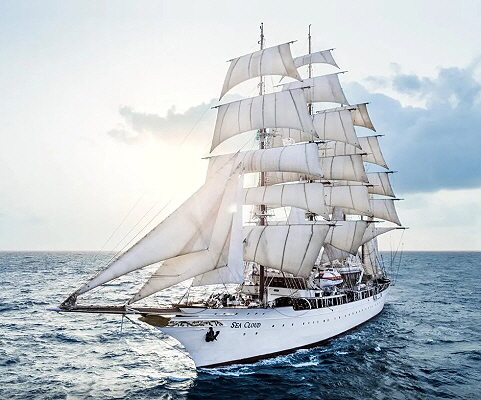
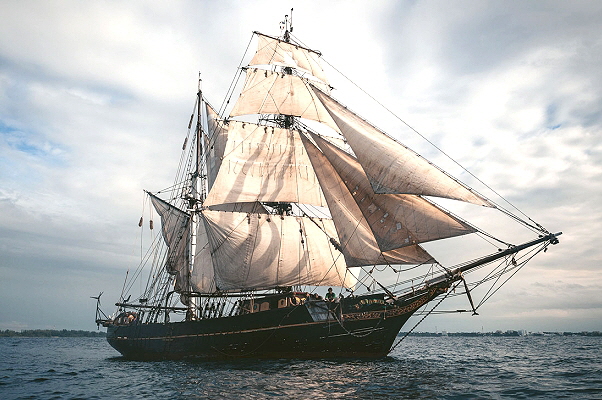

The cruise ship Sea Cloude and the cargo ship Tres Hombres are small and we would need maybe more than a million of them to deliver the world. But what should it? In terms of purchase, usage time and environmental friendliness, this would be more than possible. We should also consider whether it is really necessary to continue using the world's oceans to deliever fossil fuels, especially with the existing poison slingshots. Furthermore, we should think about whether we now want to use other potentially dangerous substances such as ammonia or hydrogen for propulsion and want to sail across the seas with that stuff. We know the damage previously caused by petroleum and chemicals. Do we want to continue this with other substances? It really can't be. Incidentally, it is important to think about what plastic gimmicks we really need and what products we could just as well produce at home without exploiting people in other countries. But not only people but also resources should no longer be exploited, especially not when CO2 is produced again. Hydrogen from lignite is not an alternative. Link to Tres Hombres: https://www.treshombres.at
There are on-site methods of obtaining hydrogen from seawater, based on a global, green energy network
Hydrogen generated from seawater on the coasts, with really green, electrical energy from thermal solar power plants, taken from a global energy network, promotes the chemistry in seawater. It is well known that our seas are becoming more and more acidic due to too much CO2. The lye produced during the electrolysis of seawater binds the carbonic acid in the seawater and forms carbon from it, which sinks to the bottom and is stored in the sediment. In this way we would increase the capacity of the oceans to store CO2 and in this way also reduce CO2. The energy for this could also come from wind and tidal systems, but the basis would always be a global energy network to really have enough green energy available everywhere, at any time of the year, in any weather condition and at any time of the day.
Home Energy Water Work Economy Solution Politics Team Product Recycling Cars Ships Aircrafts Promotion
World Pollution Air Weather Violence Women Weapons Psychology Plants Animals Food Peace Faith Imprint